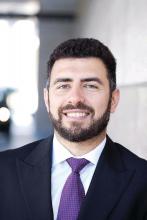Migraine is the most common disabling neurologic disease, with an estimated 1 billion sufferers worldwide.1 In children aged 5-15 years, migraine prevalence is 10%, and these children miss more school than their peers.2,3 Research specific to the child and adolescent migraine population is imperative, as the findings in adult studies do not always correlate or translate to pediatrics. The American Headache Society (AHS) held its 59th annual scientific meeting in Boston in June 2017, a meeting designed to showcase the latest advances in the field of headache medicine. Several interesting pediatric headache studies were presented.
Pediatric patient, parent goals and preferences for preventive treatment
There is a general consensus among headache specialists that migraine preventive treatment should be instituted when a migraineur has at least four headache days per month. Clinically, and in most research trials, migraine preventive treatment is considered effective when a 50% reduction in headache days or the headache frequency is reduced to no more than four headache days per month.
One study’s objective was to determine patient and parent treatment goals for preventive migraine therapies via a questionnaire. The study was performed at five academic headache centers and was administered to both patients and parents for new headache evaluation and follow-up visits. Of the 306 subjects queried, 129 completed surveys during a follow-up visit. Of these, 37% said their primary goal was to stop headaches. The median goal was to reduce headaches to 2-3 days per month. Many of those surveyed would tolerate only minimal side effects in their migraine therapy.Perhaps not surprisingly, patients and families expect treatment to result in very few headaches with minimal side effects. It is helpful to understand patient and family treatment goals as clinicians so we can to better provide realistic expectations of care, improve treatment adherence, and reduce patient/parent frustration.
Premonitory symptoms
Migraine is disabling not simply because of the headache but because of the range of symptoms that occur around the headache. Migraine may involve four phases: premonitory, aura, headache, and postdrome. The premonitory phase involves symptoms that may occur hours to days prior to the headache. Functional imaging studies reveal hypothalamic activation during this phase.4 In a large retrospective study, premonitory symptoms occurred in approximately three-quarters of pediatric and adult migraineurs.5 In a prior pediatric chart review, the most common premonitory symptoms in order of decreasing frequency were fatigue, mood change, neck stiffness, and yawning.6
In the study at the AHS, premonitory symptoms were prospectively recorded. Premonitory signs were more common among episodic migraineurs with aura (57.4%) than in those without aura (31.2%), and even more common in those with chronic migraine (60%); they were more common in females (41%) than in males (32%).*Understanding and identifying premonitory signs is important for better understanding the pathophysiology of migraine and to help our patients recognize when a migraine may be coming.
Mapping pain in pediatric migraine
Diagnosis of migraine is based on the International Classification of Headache Disorders 3rd edition beta (ICHD-3b). For adults with migraine, part of the diagnostic criteria requires at least two of a number of features: unilateral location, pulsating quality, moderate or severe pain intensity, or aggravation by or avoidance of routine physical activity. The comments section of the ICHD-3b mentions that, in children under 18 years, the pain may be bilateral.
This study sought to characterize the location and quality of headache pain in the pediatric and young adult population. Sixty migraineurs were enrolled and divided into three age groups: children (7-11 years), adolescents (12-18), and young adults (19-26). The patients were guided to use a diagram to draw pain location and quality. The pain was bilateral for the majority of patients in all age groups. Of the young adult group, 85% had bilateral headache. This is of interest, as adults with migraine are conventionally thought to have unilateral headache. The main descriptors among all three groups were throbbing, pounding, and pressing. In children, tightening was more common than throbbing.
When diagnosing migraine, it is helpful to take these differences into consideration. Overall, this study provides a better understanding of the quality and location of migraine in the pediatric and young adult population.
Efficacy of zolmitriptan nasal spray in adolescents
Zolmitriptan nasal spray (NS) was approved by the Food and Drug Administration in 2015 for acute migraine treatment in adolescents ages 12-17 years. This was the first triptan NS approved for use in pediatric migraine. The NS route benefits migraineurs who need a rapidly absorbed triptan or those who do not tolerate oral triptans because of significant nausea or emesis with their migraine. The efficacy of zolmitriptan NS in adolescents was established in a multicenter, double-blind, randomized placebo controlled study with 798 participants.7 The primary endpoint of pain freedom at 2 hours after treatment for the 5-mg dose was superior to placebo, 30% vs. 17%, respectively (P less than .001; odds ratio, 2.18; 95% confidence interval, 1.40, 3.39). Patients with migraine going from moderate or severe to mild or no headache at 2 hours post treatment were 51% vs. 39%, respectively (P = .010).
The follow-up study presented at AHS was a subgroup analysis of the above data in younger (12-14 years) and older (15-17 years) adolescents. The primary efficacy endpoint of being pain free at 2 hours post treatment was similarly better for zolmitriptan 5 mg, compared with placebo, in both the younger and older adolescent migraineurs.
This study reinforces that zolmitriptan 5-mg NS is an effective abortive migraine treatment in adolescents and is generally well tolerated.
New migraine treatments
Although not pediatric studies, several presentations addressed exciting new preventive treatments that target one of the main neuropeptides implicated in migraine pathophysiology, calcitonin gene related peptide. Four drug companies have completed phase II and phase III adult trials in which they have developed humanized monoclonal antibodies that bind to CGRP or its receptor. These medications have shown great promise and appear to be very well tolerated. These are the first medications developed specifically for migraine prevention, as opposed to current medications which we borrow from other fields of medicine. It is anticipated they will be available for use in adult migraineurs later this year.
Dr. Qubty is a pediatric headache specialist and an assistant professor of neurology at the University of California, San Francisco, and he is a member of the American Headache Society. He said he had no relevant financial disclosures.
*Correction, 8/10/2017: An earlier version of this article misstated the percentage of pediatric migraine patients who had premonitory signs, and how common premonitory signs were among episodic migraineurs with and without aura.
References
1. Lancet. 2016 Oct 8;388(10053):1545-1602.
2. Dev Med Child Neurol. 2010 Dec;52(12):1088-97.
3. Neurology. 2012 Oct 30;79(18):1881-8.
4. Brain. 2014 Jan;137(Pt 1):232-41.
5. Cephalalgia 2016;36:951-959.




